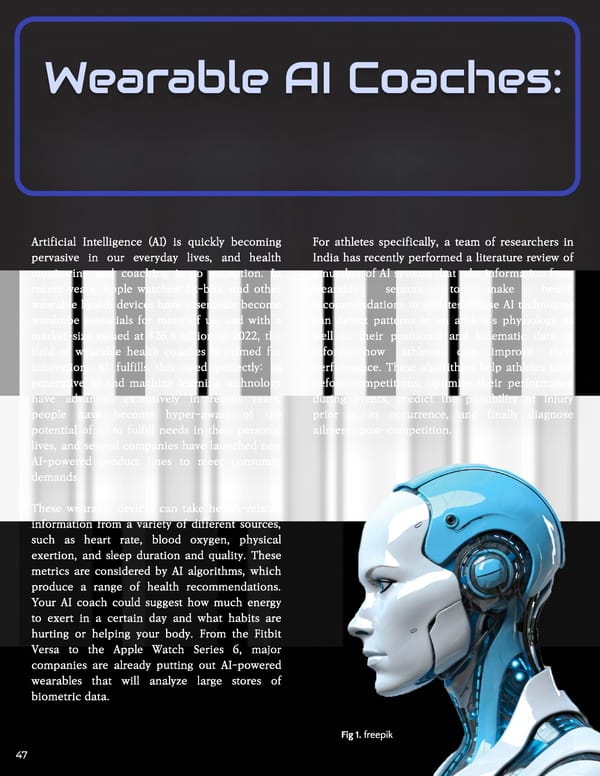Wearable AI Coaches: Written by Ethan Sun | Edited by Richard Zhuang | Designed by Zachary Rentala Artificial Intelligence (AI) is quickly becoming For athletes specifically, a team of researchers in pervasive in our everyday lives, and health India has recently performed a literature review of monitoring and coaching is no exception. In a number of AI systems that take information from recent years, Apple watches, fit-bits, and other wearable sensors to make health wearable health devices have essentially become recommendations to athletes. These AI techniques wardrobe essentials for many of us, and with a can detect patterns in an athlete’s physiology as market-size valued at $26.8 billion in 2022, the well as their positional and kinematic data to field of wearable health coaches is primed for inform how athletes can improve their innovation. AI fulfills this need perfectly: as performance. These algorithms help athletes train generative AI and machine learning technology before competitions, optimize their performance have advanced extensively in recent years, during events, predict the possibility of injury people have become hyper-aware of the prior to its occurrence, and finally diagnose potential of AI to fulfill needs in their personal ailments post-competition.ꨀ lives, and several companies have launched new AI-powered product lines to meet consumer demands㠀 These wearable devices can take health-related information from a variety of different sources, such as heart rate, blood oxygen, physical exertion, and sleep duration and quality. These metrics are considered by AI algorithms, which produce a range of health recommendations. Your AI coach could suggest how much energy to exert in a certain day and what habits are hurting or helping your body. From the Fitbit Versa to the Apple Watch Series 6, major companies are already putting out AI-powered wearables that will analyze large stores of biometric data㠀 Fig 1. freepik 47
 Penn Healthcare Review Fall 2023 Journal— Sports Medicine Page 51 Page 53
Penn Healthcare Review Fall 2023 Journal— Sports Medicine Page 51 Page 53